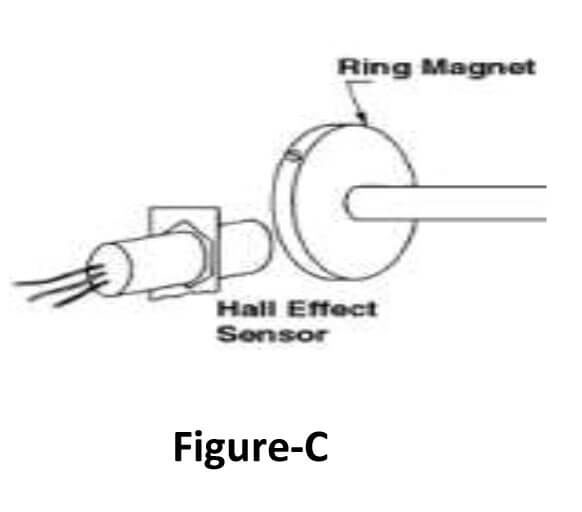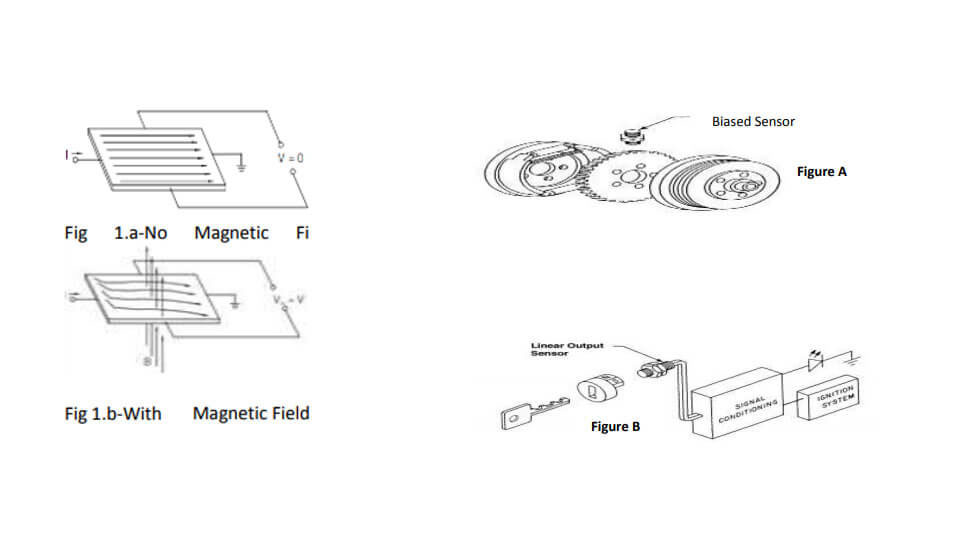Hall effect sensor is a device that is used to measure the magnitude of a magnetic field. The Hall element is constructed from a thin sheet of conductive material with output connections perpendicular to the direction of current flow. Its output voltage is directly proportional to the magnetic field strength through it. When the Hall element is combined with the associated electronics, it forms a Hall effect sensor.
Theory of Hall Effect-When a current-carrying conductor is placed into a magnetic field, a voltage will be generated perpendicular to both the current and the field. This principle is known as the Hall effect.
Hall effect sensors convert a magnetic field to a useful electrical signal. In general, however, physical quantities (position, speed, temperature, etc.) other than a magnetic field are sensed.
Many physical parameters can be measured by inducing motion of a magnet. For example, both temperature and pressure can be sensed through the expansion and contraction of a bellows to which a magnet is attachd
Application of Hall Effect Sensor -
Anti-skid sensor - The sensor is positioned to sense an internal tooth gear. The gear could be the disk brake hub. The reaction time of the braking system will determine the frequency of the signal as a function of wheel revolution.
Door interlock and ignition sensor - A concept approach that uses a digital output bipolar sensor to provide a signal that energizes the inside courtesy lights to provide an extra measure of safety. A sensor is positioned so that a magnet rotates by it when the key is turned in the door lock. Ice, water and other problems associated with adverse environmental conditions are eliminated. This approach could also serve as an electrical interlock for the ignition system.
Electronic Throttle position sensor-A throttle position sensor (TPS) is a sensor used to monitor the position of the throttle in an internal combustion engine. TPS work on the principle of Hall effect, wherein the magnet is the dynamic part which mounted on the butterfly valve spindle and the Hall effect sensor is mounted with the body and is stationary. As Shown in Fig C
Level/tilt measurement sensor A digital output unipolar sensor can be installed in the base of a machine with a magnet mounted in a pendulum fashion as illustrated in Fig. As long as the magnet remains directly over the sensor, the machine is level. A change in state of the output as the magnet swings away from the sensor is indication that the machine is not level. As Shown in Fig D

